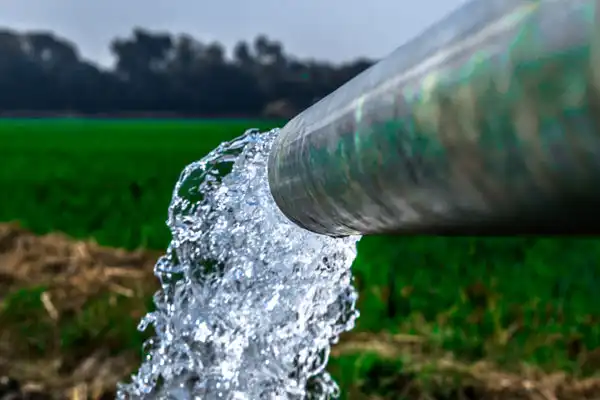
Option 1
Discovering a leaking pipe in your home can be a stressful situation, but it’s important to act swiftly to prevent further damage. Whether it’s a small drip or a more significant leak, knowing how to respond can make a huge difference. In this blog post, we’ll walk you through the steps to take if you find yourself facing this common household issue.
Step 1: Turn Off the Water Supply
The first and most crucial step in dealing with a leaking pipe is to shut off the water supply to prevent further damage. Locate the main water shut-off valve in your home, which is typically located near the water meter or where the main water line enters your property. Turn the valve clockwise until it’s fully closed. This will stop the flow of water and give you the necessary time to assess the situation.
Step 2: Drain the Faucets
After turning off the main water supply, open all the faucets in your home to drain any remaining water from the pipes. This will help relieve pressure and reduce the risk of further leakage.
Step 3: Identify the Source of the Leak
Carefully inspect the leaking area to identify the source of the problem. Leaks can occur due to a variety of reasons, including corrosion, loose fittings, or even a burst pipe. If the leak is a small crack, it may be possible to repair it temporarily while you wait for professional assistance.
Step 4: Temporary Repair
If the leak is small and manageable, consider using a pipe repair clamp or epoxy putty to create a temporary fix. These materials can help seal small leaks until a professional plumber arrives. However, remember that this is not a permanent solution, and you should still seek professional assistance to address the underlying issue.
Step 5: Contact a Professional Plumber
For more significant leaks or if you’re unsure about how to handle the situation, it’s best to call a licensed and experienced plumber. At Ashton, we have the expertise and tools to accurately diagnose and repair the issue. Make sure to provide us with as much information as possible about the leak, as this will help us come prepared with the necessary equipment.
Step 6: Clean Up and Preventative Measures
After the leak has been addressed, it’s essential to clean up any water damage to prevent mold and further structural issues. Use towels, buckets, and a wet-dry vacuum to remove excess water. Consider using fans or dehumidifiers to aid in the drying process.
To prevent future leaks, consider these preventative measures:
Regularly inspect your plumbing for signs of wear and tear.
Ensure pipes are adequately insulated, especially in colder climates.
Avoid using harsh chemical drain cleaners, as they can weaken pipes over time.
Monitor water pressure to prevent excessive stress on the pipes.
Dealing with leaking pipes can be a daunting task, but with the right knowledge and prompt action, you can minimize damage and prevent further issues. Call us at Ashton if you’re unsure how to handle a leak in your piping.
Option 2
Q. How can I tell if my pipes are leaking?
A: Common signs of a leaking pipe include damp or discoloured spots on walls or ceilings, a sudden increase in water bills, reduced water pressure, and the sound of running water when no fixtures are in use.
Q: What’s the first thing I should do if I discover a leak?
A: The immediate action you should take is to shut off the water supply. Locate the main shut-off valve, usually near the water meter or where the main line enters your property, and turn it clockwise until it’s fully closed.
Q: Should I try to fix the leak myself?
A: If you’re experienced with plumbing repairs and the leak is minor, you can attempt a temporary fix using a pipe repair clamp or epoxy putty. However, for significant leaks or if you’re unsure, it’s best to call a professional plumber.
Q: How do I temporarily fix a small leak?
A: To temporarily fix a small leak, clean and dry the area around the leak. Apply a pipe repair clamp or use epoxy putty according to the manufacturer’s instructions. Remember, this is not a permanent solution, and you should still seek professional help.
Q: Why is it important to drain the faucets after shutting off the water supply?
A: Draining the faucets helps relieve pressure in the pipes and reduces the risk of further leakage. It’s a crucial step to ensure that no water remains in the system.
Q: What can I do to prevent future leaks?
A: Regular inspections of your plumbing system can help catch potential issues early. Ensure pipes are adequately insulated, avoid using harsh chemical drain cleaners, and monitor water pressure to prevent excessive stress on the pipes.
Q: What should I do while waiting for the plumber to arrive?
A: While waiting for the plumber, focus on minimizing water damage. Use towels, buckets, or a wet-dry vacuum to remove excess water. Consider using fans or dehumidifiers to aid in the drying process.
Q: How do I find a reliable plumber?
A: Ask for recommendations from friends, family, or neighbors. Look for licensed and insured plumbers with positive customer reviews. You can also check with local plumbing associations or use reputable online directories.
Q: Are there any DIY solutions for preventing pipe leaks?
A: Proper insulation and regular maintenance are key in preventing pipe leaks. Ensure pipes in vulnerable areas, like attics or crawl spaces, are well-insulated. Additionally, be mindful of what you’re putting down drains to avoid corrosion.
Q: What should I do if the leak causes significant water damage?
A: If the leak has caused extensive damage, consider contacting a water damage restoration service. They have the expertise and equipment to properly assess and mitigate the damage.
Remember, if you’re unsure about how to handle a leaking pipe situation, it’s always best to seek professional assistance. At Ashton, we have the expertise to accurately diagnose and repair the issue, ensuring the problem is resolved effectively.

